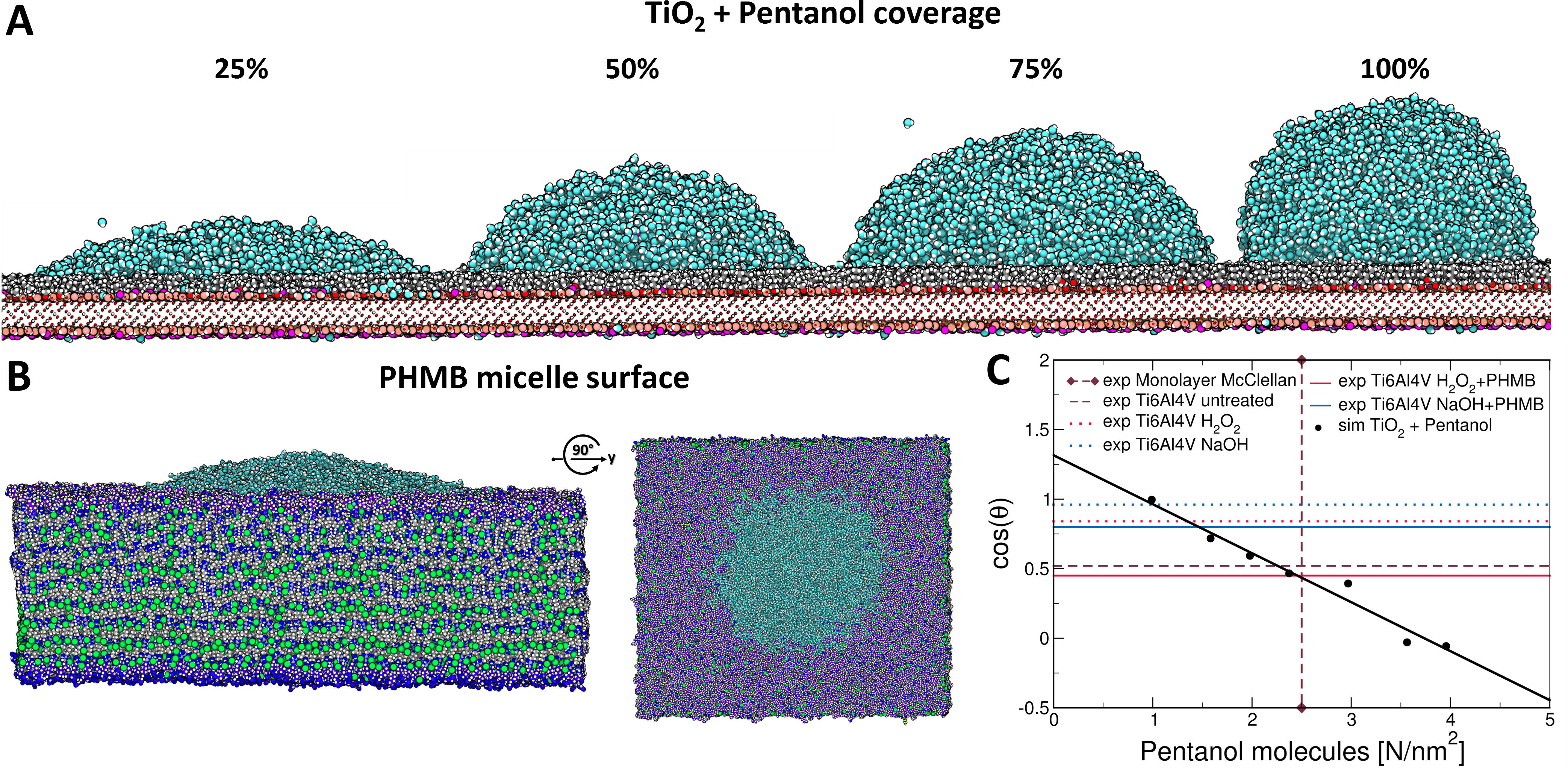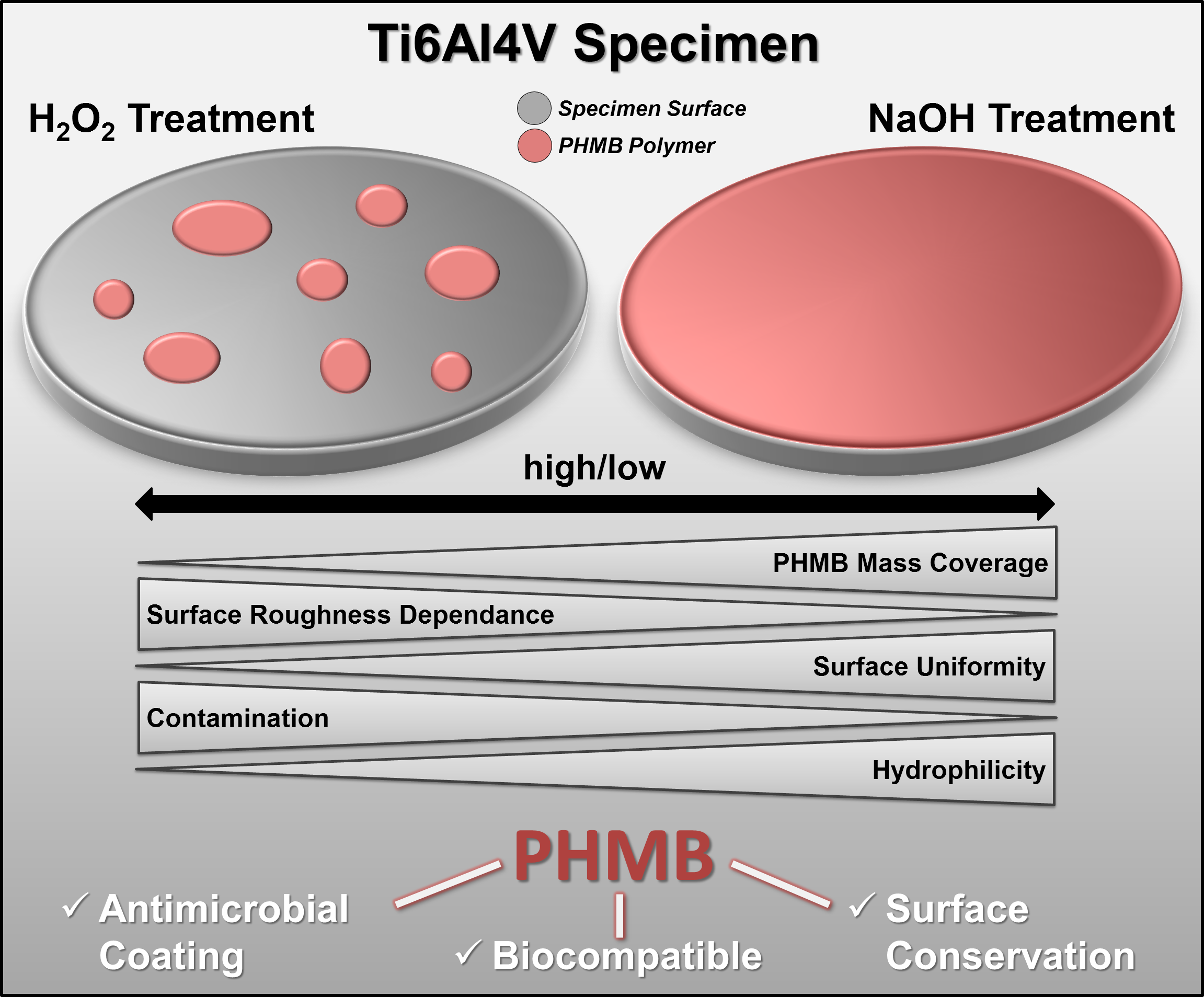Unlike the native surface of the implant material (Ti6Al4V), oxidation with H2O2 leads to increased binding of the effective antimicrobial agent poly(hexamethylene) biguanide [PHMB]. However, treating with NaOH instead results in an even higher PHMB mass coverage. After oxidation with H2O2, strong differences in the PHMB adsorption capability between polished and corundum-blasted surfaces appear, indicating a roughness dependence. After NaOH treatment, no such effect was observed. The wetting properties of specimens treated with either H2O2 or NaOH prior to PHMB exposure clearly varied. To unravel the nature of this interaction, widespread in silico and in vitro experiments were performed.
Norman's paper on Improved Adsorption of the Antimicrobial Agent Poly (Hexamethylene) Biguanide on Ti-Al-V Alloys by NaOH Treatment and Impact of Mass Coverage and Contamination on Cytocompatibility is published in Coatings. Congratulations Norman!
fulltext


